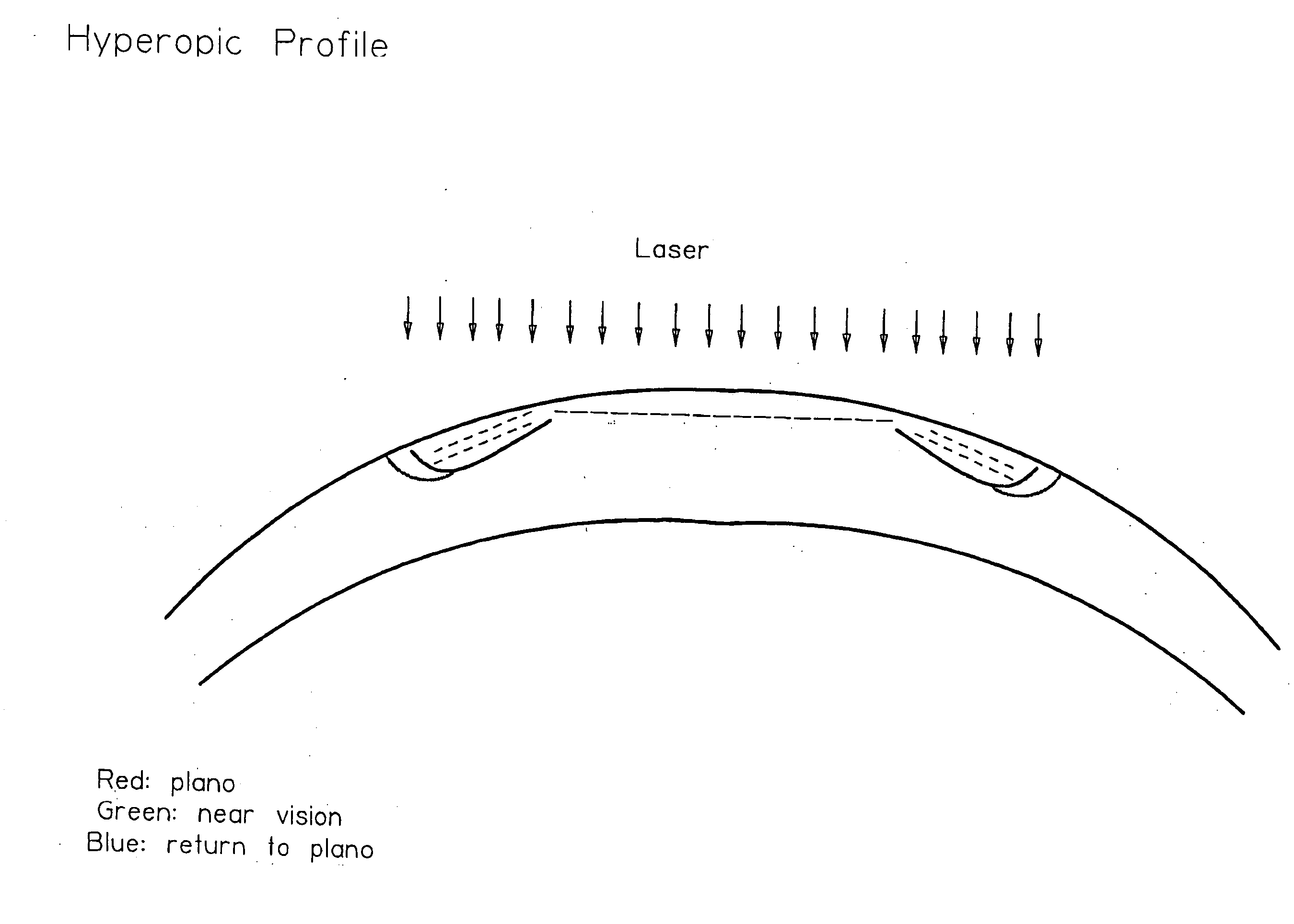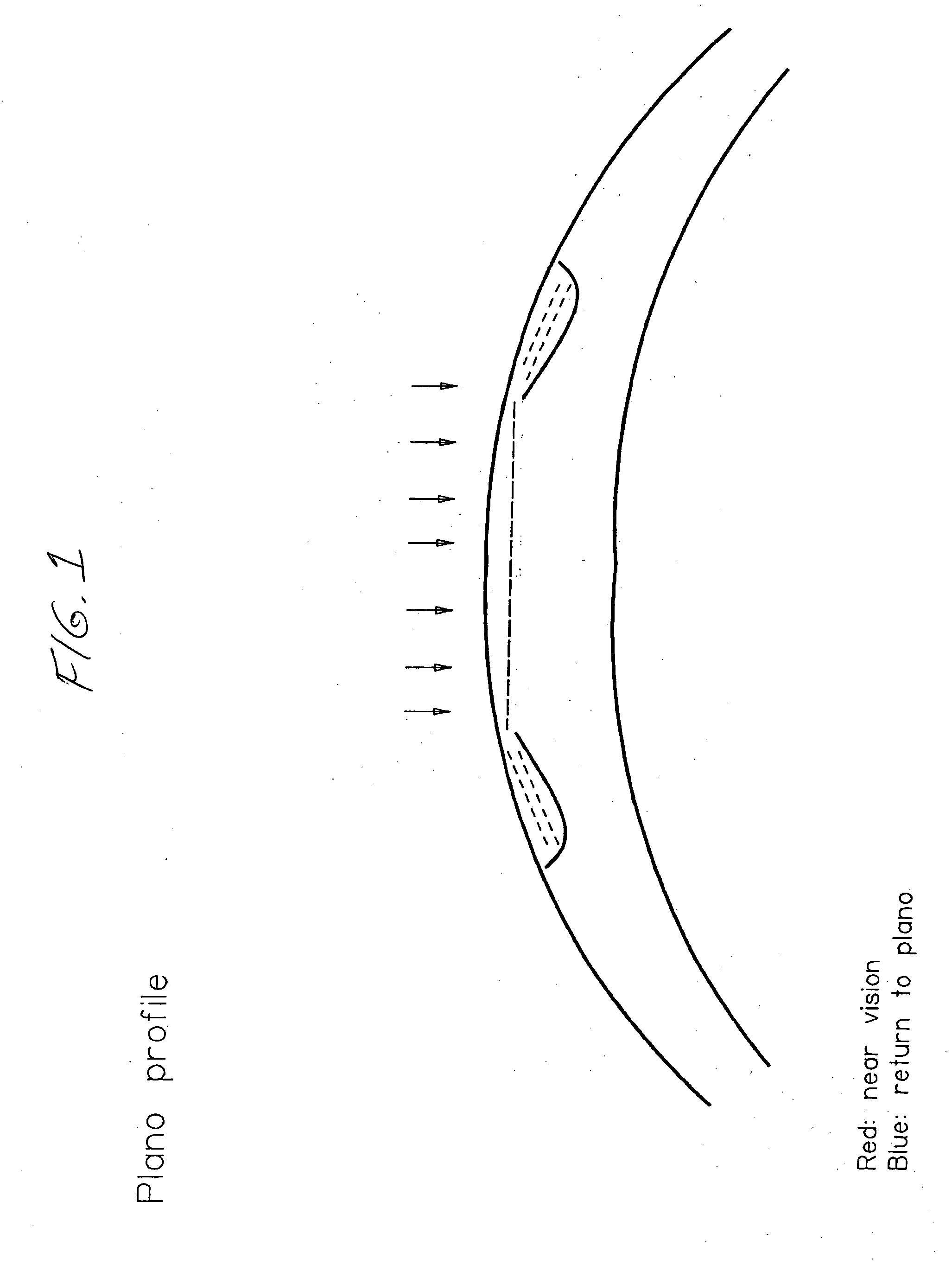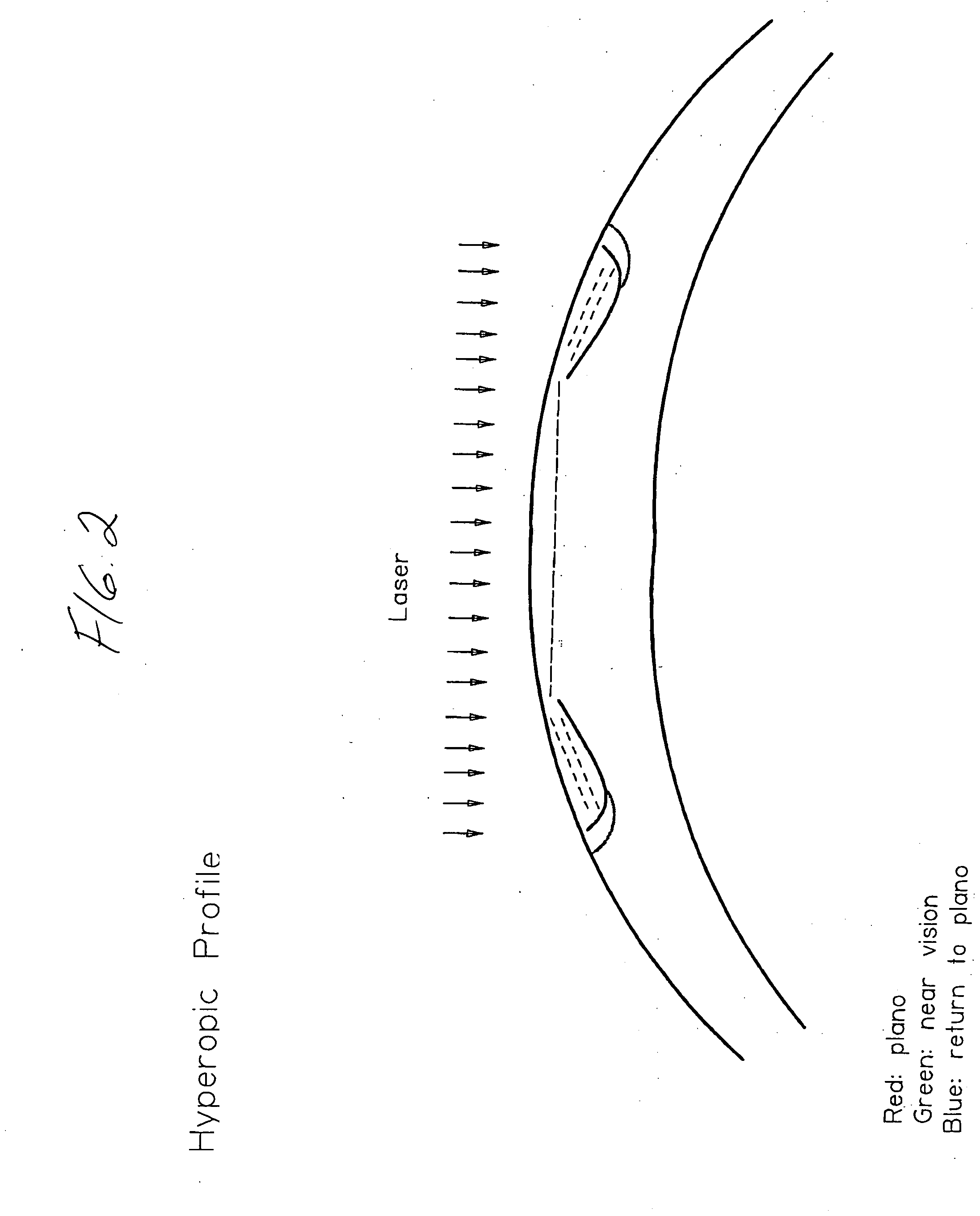Apparatus for correcting presbyopia
a presbyopia and apparatus technology, applied in the field of apparatus for correcting presbyopia, can solve the problems of distorted vision, inability to achieve good visual acuity, and inability to correct presbyopia with photorefractive surgery equipment, and achieve the effect of effective and accurate correction
- Summary
- Abstract
- Description
- Claims
- Application Information
AI Technical Summary
Benefits of technology
Problems solved by technology
Method used
Image
Examples
example 1
[0034] Emmetropic patient (with good normal distant vision) suffering from presbyopia (+2; age between 50 and 60 years).
[0035] Sequence of machine instructions: [0036] key in data relating to the extent of the area of intervention: 6 mm; [0037] key in data relating to the first depth of intervention: such as to reduce the presbyopic defect by +1; [0038] first activation of the laser beam (corresponding to the execution of a first ablation over the whole optical area considered); [0039] key in data relating to the extent of the second area of intervention: 6.5 mm; [0040] key in data relating to the second depth of intervention: such as to reduce the presbyopic defect by another +1; [0041] second activation of the laser beam (corresponding to the execution of a second ablation over the whole 6.5 mm optical area);
[0042] Correction of the induced myopia defect of 2 dioptres: [0043] key in data relating to the extent of the third area of intervention: 5.2 mm; [0044] key in data relatin...
example 2
[0049] Myopic patient (−2 dioptres) also suffering from presbyopia (+2.5; age between 60 and 70 years)
[0050] Sequence of machine instructions: [0051] key in data relating to the extent of the first area of intervention: 5.6 mm; [0052] key in data relating to the first depth of intervention: such as to reduce the myopic defect by −1; [0053] first activation of the laser beam (corresponding to the execution of a first ablation over the whole optical area considered); [0054] key in data relating to the extent of the second area of intervention: 5.8 mm; [0055] key in data relating to the second depth of intervention: such as to reduce the myopic effect by another −1; [0056] second activation of the laser beam (corresponding to the execution of a second ablation over the whole 5.8 mm optical area);
[0057] Correction of the presbyopic defect: [0058] key in data relating to the extent of the third optical intervention area: 6 mm; [0059] key in data relating to the third depth of intervent...
example 3
[0071] Patient with hypermetropia of +1 and suffering from presbyopia (+1; age between 40 and 45 years)
[0072] Sequence of machine instructions: [0073] key in data relating to the extent of the first optical intervention area: 6 mm; [0074] key in data relating to the first depth of intervention: such as to reduce the hypermetropic defect by +1; [0075] first activation of the laser beam (corresponding to the execution of a first ablation over the whole 6 mm optical area); [0076] key in data relating to the extent of the second area of intervention: 6.5 mm; [0077] key in data relating to the second depth of intervention: such as to reduce the presbyopic defect (+1); [0078] second activation of the laser beam (corresponding to the execution of a second ablation over the whole 6.5 mm optical area);
[0079] Correction of the induced hypermetropia defect: [0080] key in data relating to the extent of the third area of intervention: 5.2 mm; [0081] key in data relating to the third depth of i...
PUM
 Login to View More
Login to View More Abstract
Description
Claims
Application Information
 Login to View More
Login to View More - R&D
- Intellectual Property
- Life Sciences
- Materials
- Tech Scout
- Unparalleled Data Quality
- Higher Quality Content
- 60% Fewer Hallucinations
Browse by: Latest US Patents, China's latest patents, Technical Efficacy Thesaurus, Application Domain, Technology Topic, Popular Technical Reports.
© 2025 PatSnap. All rights reserved.Legal|Privacy policy|Modern Slavery Act Transparency Statement|Sitemap|About US| Contact US: help@patsnap.com



